Adapted and Re-edited by F. Hriadil
When referring to Qi or Internal development, the first aspect that should be addressed is Breathing. It is clear that a human being can live for a number of weeks without food and a number of days without water; but, a person cannot survive for much more than a few minutes without air. Developing the ability to breathe fully and efficiently is the key to significantly improving a person’s health and quality of life.
One replenishes the expended energy in the body by taking in both food and air. While the importance of a good diet and proper nutrition is well-understood today, the importance of the breathing process in the promotion and maintenance of good health has not received adequate recognition in western society. If one’s breathing is inefficient, the body can easily expend more energy than it can replenish. This is one of the main reasons why so many people become tired and exhausted at the end of the day — their breathing process is inefficient. They are not able to fully replenish the physical and mental energy that is expended during the day’s activities. However, anyone and everyone can learn to breathe fully and efficiently through the breathing development and breath control exercises of Ba Gua Zhang. This type of training serves to strengthen the body’s vital capacity and help the body rid itself of toxins and disease.
It is also clear that breathing exercises and breath control techniques are key elements in developing high skill in internal martial arts practice. To effectively apply Qi or Internal Energy in a martial application or a healing application, a practitioner needs to develop proper body alignments and mechanics, the ability to concentrate Qi in his or her body, and the ability to move the Qi with the mind. This comprises the crucial trinity formula of Ba Gua Zhang Qi Gong practice:
FORM + BREATH + MIND
which is necessary for the attainment of high skill. This is no easy task. However, through proper breathing exercises, meditation training, and other Qi Gong practice, this ability can eventually be attained.
The following elements are extremely important for those wishing to practice Qi Gong Breathing Exercises:
Proper Practice that is Closely Monitored
It must be stated that while breathing exercises and breath control techniques are powerful methods for improving health and martial arts skill, they can be very dangerous if they are practiced incorrectly. Moreover, even a breathing exercise that is practiced perfectly by an individual whose body is not ready or not suited for that particular exercise can cause great harm to the practitioner. Breathing methods are an integral part of the Ba Gua Zhang training of Lu Shui-Tian; however, these methods are taught by prescription only. Each student is given specific breathing exercises based on his or her unique needs and level of development. A doctor treating a number of patients does not prescribe the exact same thing to everyone. One patient may need more of a certain vitamin, another may need to increase mineral intake, still another may need to cut down on cholesterol, etc. Likewise, breathing exercises are assigned to students on an individual basis. Lu Shui-Tian taught over twenty breathing methods to Master Park – each designed with a specific purpose and for a specific result.
Proper Program
When a student begins the study of Ba Gua Zhang, he or she is given three breathing exercises. Two basic breathing techniques are given to almost every student in order to build a good foundation. The third breathing method is a prescription breath specific to the individual student. Students with medical or health conditions such as asthma, high blood pressure, and other heart or lung disorders are given their own special exercises. The general intent and nature of these breathing exercises will be reviewed here but the specific breathing exercises themselves will not be described in any detail. It would inappropriate to do so. Those readers interested in learning more should enroll in classes with a Student Group or a Certified Instructor in the Ba Gua Zhang method of Lu Shui-Tian. A list is provided in the Regular Classes section of this website.
The first two foundation breathing methods are practiced, in order, before performing the prescription breathing method. These first two breaths are never changed because they serve to prepare the body to carry out the more demanding prescription breath. The prescription breath is changed as the student improves in his or her level of skill and development.
The specific breathing methods are:
1. Cleansing Breath
2. Filling Breath
3. Prescription Breath
Proper Foundation – the Cleansing Breath and the Filling Breath
Before Qi development exercises can be practiced properly, the body must be cleansed and the lungs must be conditioned to work at full capacity. When we breathe, we inhale air or Life Force Energy; however, with that air comes toxins, viruses, bacteria, chemicals, etc. that are prevalent in the environment. Anyone who takes the time to read the ingredient labels on most processed or packaged food can see that we consume chemicals in our food as well. In order to operate efficiently, the body tries to dispel these undesirable agents by various means. One way is through the digestive elimination process and another way is through the respiratory process. With each exhale some of the chemical and biological agents that have been absorbed are expelled. Most of this respiratory cleansing process takes place at night while the body rests. If the reader wants to test this statement, just have someone smell your breath when you first wake up. This waking halitosis is indicative of the body ridding itself of chemical and biological toxins. The Cleansing Breath method is specifically designed to facilitate the elimination of these bad elements to cleanse the body in preparation for carrying out the Qi development exercises.
The second foundation breath is the Filling Breath. Most breathing exercises from the East Indian or Chinese yogic traditions focus the breath exclusively in the lower abdomen or Tan Tian. While a student must eventually learn this type of breathing, he or she must first insure that all five lobes of the lungs are operating at full capacity. Individuals who have never practiced breathing exercises will usually take shallow breaths. Shallow breathing only develops the upper portion of the lungs and results in very inefficient breathing. On the other hand, individuals who practice only lower abdominal breathing exercises tend to under-utilize their upper lungs. In this circumstance, the upper chest tends to become tight and again full breathing capacity is restricted. By practicing the Filling Breath everyday before the Qi development breathing exercises, the practitioner insures that all lobes of the lungs are exercised and that the chest is operating to its full capacity.
Proper Prescription Breath
After “warming up” with the Cleansing Breath and the Filling Breath exercises, the practitioner then performs the Prescription Breath exercise. As stated above, this exercise is specifically assigned to the student and is closely monitored by the instructor. The Prescription Breath will not be the same for all students and is prescribed based on the student’s specific needs. The student will typically practice this exercise for a minimum of three months at which time the instructor will check the student’s progress by checking different areas of the student’s body while he or she inhales and exhales. If the student is ready to advance, he or she will discard the old prescription breathing exercise and will be given a new one to replace it.
Proper Conditions
The best time to practice breathing methods is in the morning before 10 AM. The optimum time for practice is in the period from one-half hour before to one-half hour after sunrise. During this period, the air is fresh and energized. At sunrise, the night air, which is Yin, is in the process of changing to day air, which is Yang. According to the Chinese principles of Yin and Yang, when Yin is in the process of changing to Yang (or vice-versa) the energy is the greatest. Also, it is best to practice breathing exercises outdoors facing the sun (the source of life sustaining energy for the earth). If one must practice indoors, then it is better to open a window to get fresh air and it is still desirable to face the direction of the sun.
Although it is recommended that students practice the breathing exercises before 10 AM, this is strictly a guideline. The primary underlying factor for consideration as to when it is best to practice breathing exercises is the balance of Yin and Yang in the air. As a rule of thumb, cold, wet air is Yin and warm, dry air is Yang. Therefore, if a person lives in Texas and it is summer, at 10 AM it will be too hot to practice breathing exercises efficiently because the Yang content is high and the energy level is low. Also, if it has been raining for a few days, it is better for the student to even skip the breathing exercises for a day because the air is too wet or Yin.
It should be understood that a practitioner can benefit no matter what time of the day the breathing exercises are performed. It is simply a matter of degree and efficiency. The body will not be harmed; however, when the air is too Yin or too Yang, the benefit gained will be greatly reduced compared to the effort that is expended. Practicing in the period around sunrise will produce the greatest benefit for the least effort.
Proper Method
Body posture is extremely important to proper breathing technique. It is important that the body be relaxed and natural. This ensures that the posture will be correct. The practitioner can sit on the floor, sit on a chair, or stand. Sitting on the edge of a chair, with the spine naturally erect and hands placed on the knees is usually the most comfortable position for practitioners. The tongue should lightly touch the roof of the mouth behind the front teeth. Placing the hands on the knees will help to complete an “energy circuit” in the body. If the lower abdomen is weak, then the student may place his or her hands on the lower abdomen to stimulate this region.
Applying it to Self-Defense
After the practitioner has developed a sufficient level of breath control and increased lung capacity, he or she is taught how the breathing methods are combined with the Palm Exercises. Even if a student’s palm striking mechanics are perfect, he or she will not reach the highest levels of striking ability until the striking mechanics are properly coupled with correct breathing and Qi control. This adheres to the trinity principle that is crucial to a superior level of development in the Ba Gua Zhang of Lu Shui-Tian and Master Bok-Nam Park.
Above is an excerpt from “The Fundamentals of Pa Kua Chang: The Method of Lu Shui-T’ien as Taught by Park Bok-Nam,” by Park Bok-Nam and Dan Miller, published by High View Publications in 1993.

